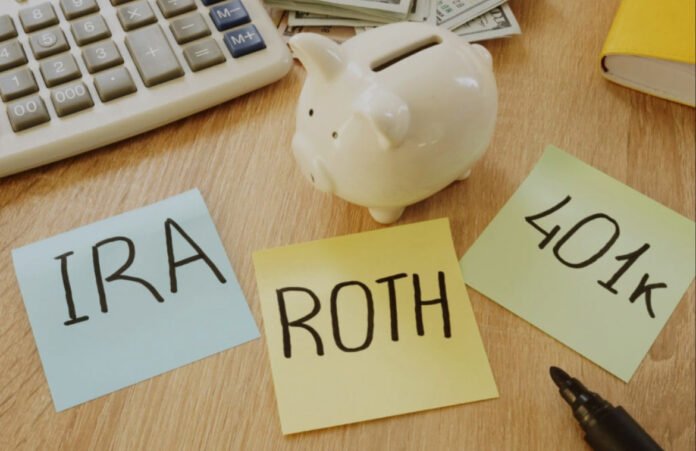Introduction: Understanding Your Retirement Account Options
Planning for retirement involves many decisions, and one of the most important is choosing the right retirement accounts to grow your savings. Two of the most popular options in the United States are the 401(k) and the IRA (Individual Retirement Account). Both offer tax advantages designed to help you build a nest egg for your future, but they differ in several key ways.
Understanding the differences between a 401(k) and an IRA is essential for effective retirement planning. The right choice depends on your employment status, income level, and financial goals. This article will explain the key features of each account, how they impact your retirement savings, and tips to maximize your benefits.
What Is a 401(k)?
A 401(k) is an employer-sponsored retirement savings plan that allows employees to contribute a portion of their paycheck before taxes are taken out. Many employers also offer matching contributions, which means free money added to your retirement fund. This makes the 401(k) a powerful tool for building wealth over time.
Key features of a 401(k):
- Contribution Limits: In 2025, you can contribute up to $23,000 annually if you’re under 50, and up to $30,500 if you’re 50 or older thanks to catch-up contributions.
- Tax Benefits: Contributions are made pre-tax, which lowers your taxable income for the year. Taxes are paid when you withdraw the money in retirement.
- Employer Match: Many employers match contributions up to a certain percentage, which can significantly boost your savings.
- Investment Options: Usually limited to a selection of mutual funds or ETFs chosen by the plan administrator.
- Withdrawal Rules: Generally, withdrawals before age 59½ may incur taxes and a 10% penalty unless specific exceptions apply.
- Required Minimum Distributions (RMDs): Starting at age 73, you must begin withdrawing minimum amounts annually.
What Is an IRA?
An Individual Retirement Account (IRA) is a personal retirement savings account that anyone with earned income can open independently of their employer. There are two main types: Traditional IRA and Roth IRA, each with different tax advantages.
Key features of an IRA:
- Contribution Limits: For 2025, you can contribute up to $7,000 annually, or $8,000 if you are 50 or older.
- Tax Benefits:
- Traditional IRA: Contributions may be tax-deductible depending on income and whether you or your spouse participate in a workplace retirement plan. Taxes are paid on withdrawals during retirement.
- Roth IRA: Contributions are made with after-tax dollars, but qualified withdrawals in retirement are tax-free.
- Investment Options: Offers a wide range of investment choices, including stocks, bonds, mutual funds, ETFs, and more.
- Withdrawal Rules: Traditional IRAs have similar early withdrawal penalties as 401(k)s; Roth IRAs allow contributions to be withdrawn anytime tax- and penalty-free.
- Required Minimum Distributions (RMDs): Traditional IRAs require RMDs starting at age 73; Roth IRAs do not require RMDs during the owner’s lifetime.
Key Differences Between 401(k) and IRA
| Feature | 401(k) | IRA |
|---|---|---|
| Contribution Limits | Up to $23,000 ($30,500 if 50+) | Up to $7,000 ($8,000 if 50+) |
| Sponsorship | Employer-sponsored | Individual account, opened independently |
| Tax Treatment | Pre-tax contributions (traditional), some plans offer Roth option | Traditional IRA (pre-tax or deductible), Roth IRA (post-tax) |
| Investment Options | Limited by employer’s plan | Wide variety of investment choices |
| Employer Match | Often available | No employer match |
| Withdrawal Penalties | Withdrawals before 59½ subject to penalties unless exceptions apply | Similar penalties; Roth IRA contributions can be withdrawn anytime |
| Required Minimum Distributions | Required starting at 73 | Required for Traditional; not required for Roth |
How They Impact Your Retirement
Both 401(k) and IRAs play important roles in retirement planning by providing tax advantages and encouraging disciplined saving. However, your choice can affect your savings potential, flexibility, and tax situation.
- 401(k) plans often allow higher annual contributions and benefit from employer matches, making them excellent for aggressive savings. However, limited investment choices may restrict your portfolio customization.
- IRAs offer more control over your investments and can complement a 401(k) to diversify your retirement savings. Roth IRAs add the benefit of tax-free withdrawals in retirement, which can be a powerful tax planning tool.
Combining both accounts—maximizing your 401(k) contributions and contributing to an IRA—can provide a balanced approach, leveraging the benefits of each.
Tips to Maximize Your Retirement Savings
- Always contribute enough to your 401(k) to get the full employer match.
- Consider opening a Roth IRA for tax-free growth and withdrawals, especially if you expect to be in a higher tax bracket in retirement.
- Review your 401(k) investment options regularly and rebalance as needed.
- Use IRAs for investment flexibility and to diversify your portfolio.
- If eligible, use a Backdoor Roth IRA strategy to maximize Roth benefits despite income limits.
- Avoid early withdrawals to prevent penalties and lost growth.
Final Thoughts
Planning for retirement is one of the most important financial decisions you’ll ever make. Understanding how a 401(k) and an IRA differ — from tax treatment and contribution limits to employer involvement and withdrawal rules — gives you the confidence to choose the retirement account (or combination of accounts) that aligns best with your goals.
For many people, using both a 401(k) and an IRA can provide a powerful one-two punch for retirement savings. The key is to start early, contribute consistently, and periodically review your investments to ensure they’re on track. Don’t hesitate to consult with a financial advisor to tailor your retirement plan to your income, lifestyle, and long-term needs.
For more information, the U.S. Securities and Exchange Commission (SEC) offers a helpful beginner’s guide to retirement accounts:
The more informed you are, the better equipped you’ll be to retire comfortably and confidently.







